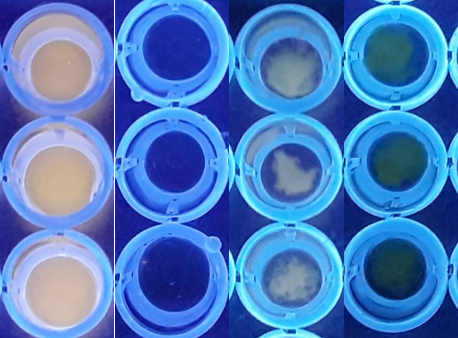VOLUME 13 (Supplement)

Philipp. Sci. Lett. 2020 13 (Supplement) 001-013
available online: July 29, 2020
*Corresponding author
Email Address: rqbaculi@up.edu.ph
Date received: January 31, 2020
Date revised: March 28, 2020
Date accepted: May 4, 2020
ARTICLE
Synthesis of CdS quantum dots by the acidotolerant fungus Trichoderma asperellum and their potential in the flourescence detection of a leptospirosis-related oligomer
University of the Philippines Baguio City, Philippines
Quantum dots (QDs) are nanoparticles that exhibit the property of fluorescence. This unique optical property of QDs, coupled with their biocompatibility, has caused them to gain attention in biomedicine and be used in gene detection. In this study, cadmium sulfide (CdS) QDs were synthesized by the acidotolerant fungus Trichoderma asperellum, isolated from the main crater lake of Taal Volcano, Batangas, Philippines. UV-Vis and fluorescence spectrophotometry determined absorption maximum at 370 nm and emission maximum at 520 nm while size approximation determined a size of 2.52 nm. Zeta-potential analysis measured an average potential of -23.9 ± 3.39 mV. Optimization of reaction conditions revealed promotion of CdS QDs synthesis in the presence of phosphate at neutral conditions after 72 hours of incubation. Fluorescence detection assay conducted with a FAM-labeled leptospirosis-related oligomer demonstrated the occurrence of Forster Resonance Energy Transfer (FRET) when addition of CdS QDs resulted to fluorescence quenching. Fluorescence recovery after addition of the target oligomer, down to a concentration of 12 nM supports the use of CdS QDs for gene detection. However, further analysis showed that the detection was only able to differentiate the pyrimidine but not the purine single-base mismatched variant of the target oligomer. This study is the first report on T. asperellum’s biosynthesis of CdS QDs.
© 2024 SciEnggJ
Philippine-American Academy of Science and Engineering